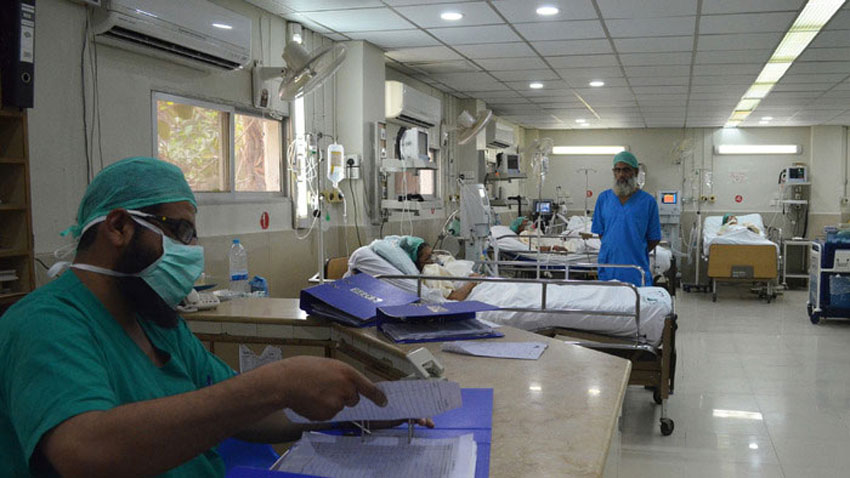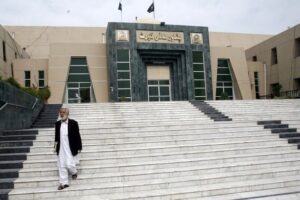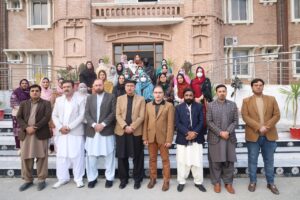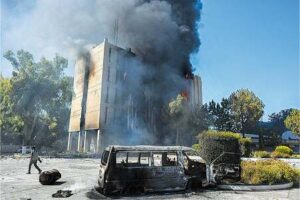PESHAWAR – In Peshawar, a new chapter in KP healthcare reforms has begun with the opening of an Outpatient Department (OPD) for kidney transplants at Khyber Teaching Hospital (KTH).
This milestone, alongside plans for dialysis units in Swat, Chitral, Dir, and Hazara, signals the provincial government’s ambition to overhaul its healthcare system. Yet, despite significant funding and bold promises, challenges threaten to hinder progress, leaving citizens yearning for improvements in healthcare access.
Also Read: Burns and Plastic Surgery Center Staff Shortage Disrupts Emergency and ICU Services
The Provincial government, under Chief Minister Ali Amin Gandapur, has prioritised KP healthcare reforms in its 2025-26 budget. The Sehat Card Plus programme’s budget has risen from 28 billion PKR to 35 billion PKR, with an additional 6 billion PKR allocated for the newly merged districts. Neonatal care centres are planned for five districts, and satellite cardiology units in Bannu and Mardan aim to expand specialised care. The Peshawar Institute of Cardiology will also receive modern machinery, supported by dedicated funds.
Ahtisham Ali, the provincial health advisor, hailed these initiatives as “serious measures” during the OPD’s inauguration. Social media posts on X reflect cautious optimism, with users like @HealthKPUpdates praising the kidney transplant OPD as a “game-changer” for KP healthcare reforms. However, the reality on the ground reveals a system under strain, struggling to meet the needs of a growing population.
Also Read: Polio Virus Detected in Pakistan Sewage Systems, Raising Global Health Alarms
Challenges in Healthcare Delivery
Despite the influx of funds, KP healthcare reforms face significant hurdles. Only 41% of the province’s 32 major hospitals have access to 200 priority medicines, and just three boast 90% functional medical equipment, according to a recent X post by @PakHealthWatch. The Asian Development Bank projects that Pakistan’s urban population will reach 40% by 2030, with Peshawar facing acute pressure due to the integration of former tribal districts. This demographic shift exacerbates shortages in medical staff, infrastructure, and essential supplies.
Allegations of mismanagement further complicate Khyber Pakhtunkhwa healthcare reforms. Reports of inflated surgical figures and operational irregularities have led to disciplinary actions against hospital staff, eroding public trust. Past reforms, such as the Medical Teaching Institute (MTI) Act of 2015 and the Regional and District Health Authorities Act of 2019, aimed to decentralise management but faced resistance from doctors’ associations, who fear increased private sector influence could limit access for low-income patients.
Also Read: Rise in Mental Health Diseases in Pakistan: A Crisis Among Diabetics
Beyond Funding
While financial commitments are a critical step, experts argue that KP healthcare reforms require more than just money. Effective oversight is essential to ensure resources are used efficiently. The current reliance on file-based reporting often obscures operational inefficiencies. Regular on-site inspections by officials and rigorous maintenance of medical equipment could significantly improve service delivery. Additionally, regulating the private sector to ensure quality and affordability is crucial for equitable access.
The Sehat Card Plus programme, a cornerstone of KP healthcare reforms, has provided free treatment to over 4.4 million people, according to provincial data. Yet, complaints about inconsistent access and misuse of services in private hospitals persist. Strengthening oversight and ensuring equitable resource distribution will be vital to sustaining public confidence.
A Long Road Ahead
The new OPD at KTH symbolises the potential of KP healthcare reforms, but it also underscores the challenges ahead. The government’s financial commitments are commendable, but without addressing structural deficiencies—shortages of staff, medicines, and functional equipment—these efforts risk falling short. As one X user, @KPCitizenVoice, put it, “Funds are welcome, but it’s the execution that will make or break healthcare in KP.”
For the people of KP, the promise of better healthcare is a beacon of hope in a region marked by economic and security challenges. The success of KP healthcare reforms hinges on robust planning, accountability, and a commitment to translating funds into tangible outcomes. Only then can the province deliver the quality care its citizens deserve.












